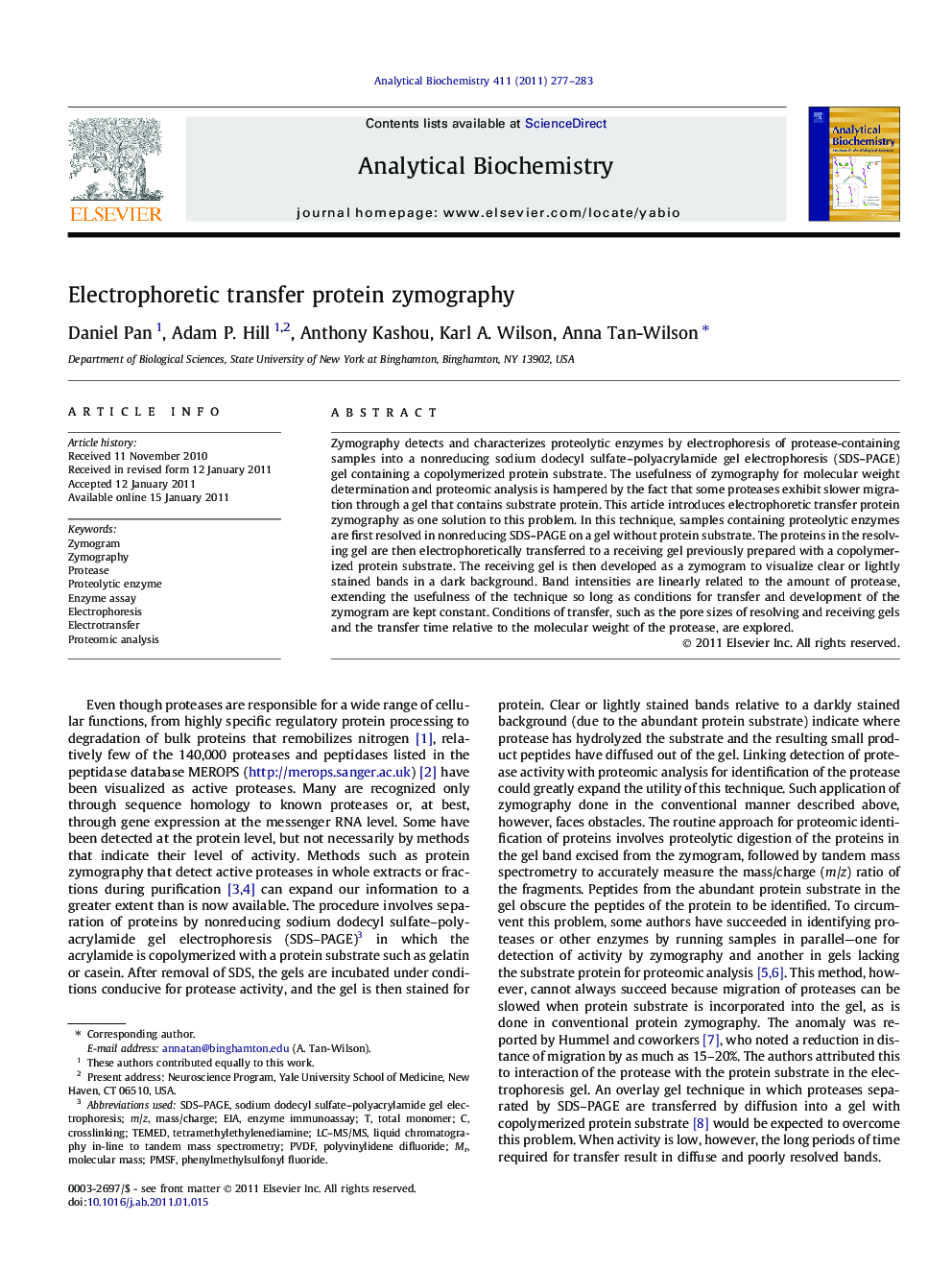| Article ID | Journal | Published Year | Pages | File Type |
|---|---|---|---|---|
| 10532680 | Analytical Biochemistry | 2011 | 7 Pages |
Abstract
Zymography detects and characterizes proteolytic enzymes by electrophoresis of protease-containing samples into a nonreducing sodium dodecyl sulfate-polyacrylamide gel electrophoresis (SDS-PAGE) gel containing a copolymerized protein substrate. The usefulness of zymography for molecular weight determination and proteomic analysis is hampered by the fact that some proteases exhibit slower migration through a gel that contains substrate protein. This article introduces electrophoretic transfer protein zymography as one solution to this problem. In this technique, samples containing proteolytic enzymes are first resolved in nonreducing SDS-PAGE on a gel without protein substrate. The proteins in the resolving gel are then electrophoretically transferred to a receiving gel previously prepared with a copolymerized protein substrate. The receiving gel is then developed as a zymogram to visualize clear or lightly stained bands in a dark background. Band intensities are linearly related to the amount of protease, extending the usefulness of the technique so long as conditions for transfer and development of the zymogram are kept constant. Conditions of transfer, such as the pore sizes of resolving and receiving gels and the transfer time relative to the molecular weight of the protease, are explored.
Keywords
Related Topics
Physical Sciences and Engineering
Chemistry
Analytical Chemistry
Authors
Daniel Pan, Adam P. Hill, Anthony Kashou, Karl A. Wilson, Anna Tan-Wilson,
